52 15th Air Force B-17s attack the submarine base at Pola.
[
 |
| 
 ]
]
Air Operations, New Guinea
- V Bomber Command B-24s, B-25s, and A-20s attack Manokwari, Efman Island, targets in the Schouten Islands, and artillery positions at Kamiri.
- A-20s attack the Wewak area.
- V Fighter Command P-40s attack occupied villages and supply dumps in the Sarmi area.
- Beginning at 1245 hours, 10 17th Reconnaissance Squadron B-25s based at Lake Sentani and escorted by 475th Fighter Group P-38s locate and attack a Japanese supply convoy on its way to Biak Island. 1 of 6 destroyer-transports is sunk and 3 are damaged. During the air attack, 3 B-25s are lost with their crews and most of the other airplanes are damaged. The remaining B-25s are so badly damaged that the 17th Reconnaissance Squadron must be withdrawn to Finschafen to draw new equipment and retrain.
- The convoy continues on toward Biak, but when a G4M 'Betty' search plane finds at 1440 hours that a USN-RAN surface battle force is poised to intercept, the 5 remaining destroyer-transports withdraw. At about 2200 hours, a VB-115 PB4Y relocates the Japanese convoy and is thus instrumental in an interception by US destroyers that results in the sinking of another destroyer-transport by gunfire.
- 475th Fighter Group P-38s down 3 Japanese fighters over the Japanese convoy between 1335 and 1345 hours.
[
 |
| 
 ]
]
Atlantic
Mines are responsible for sinking two US ships in the Normandy area: the destroyer escort Rich (DE-695) and LST-499. Destroyers Glennon (DD-620) and Meredith (DD-726) are damaged.
[
 |
| 
 ]
]
Battle of the Atlantic
- Sunderland 'R' of No 228 Squadron attacks a surfaced U-boat (U-970) which had been found by the plane's radar and illuminated with flares. The U-boat disappears during the attack and it is unsure if the attack was successful. German air-sea rescue picks up 13 survivors later in the morning.
U-970
|
| Class | Type VIIC |
| CO |
Oberleutnant zur See Heinrich Ketels |
| Location |
Bay of Biscay |
| Cause |
Air attack |
| Casualties |
38 |
| Survivors |
13 |
- Liberator 'G' sights U-629 which had first been located by radar and attacks with six depth charges. The charges are dropped in a straddle with three landing on each side of the conning tower. The explosions seem to list the U-boat clear of the water before it sinks.
U-629|
| Class | Type VIIC |
| CO |
Oberleutnant zur See Hans-Helmut Bugs |
| Location |
English Channel, SW of Ushant |
| Cause |
Air attack |
| Casualties |
51 |
| Survivors |
None |
|
U-373|
| Class | Type VIIC |
| CO |
Oberleutnant zur See Detlev von Lehsten |
| Location |
English Channel, SW of Ushant |
| Cause |
Air attack |
| Casualties |
4 |
| Survivors |
47 |
|
- Less than half an hour later, the same aircraft sights and confirms another U-boat. Another six depth-charge attack is carried out with the charges also straddling the U-boat. The U-boat (U-373) could be seen listing to starboard and sinking by the stern.
[
 |
| 
 ]
]
CBI
BURMA
On the Salween front, the Chinese 88th Division of the 71st Division achieves a limited penetration into the defenses of Lung-ling. The Chinese 87th Division reaches the North Gate of the town and cuts the Japanese supply route at the Manio Bridge on the road between Lung-ling and Tengchung.
[
 |
| 
 ]
]
Eastern Front
As a prelude to the big summer offensive the Russian 23rd and 21st Armies of the Leningrad Front of Govorov, after a three-hour-long artillery preparation, attack the Finnish positions in the Mannerheim line in the isthmus of Karelia, between Lake Ladoga to the east and the Gulf of Finland to the west. Russian diplomacy has tried to get Finland out of the war with a negotiated peace, but the conditions demanded by Moscow have so far been unacceptable to the Finns.
[
 |
| 
 ]
]
English Channel
The British netlayer Minister is sunk by a mine in Seine Bay with the loss of 57 of her crew.
[
 |
| 
 ]
]
Italy
The advance of the US VI Corps is slowed down south of Tarquinia by German resistance. The US II Corps comes within 6 miles of Viterbo. In the British sector the British V Corps, manning the Adriatic coast, continues its march north as the German troops retire. In the center of the Allied line the South African 6th Arm Div makes rapid progress in the direction of Orvieto.
The British 6th Arm Div is halted at Corese Pass, west of Monte Maggiore.
Badoglio and his government arrive in Rome.[MORE]
[
 |
| 
 ]
]
New Guinea
The islets south of Biak have all been occupied by the Americans, and today a motor torpedo-boat base on Mios Woendi is activated. On Biak, the US 186th Infantry of TF HURRICANE consolidates its positions in the Mokmer airfield area. The 2nd Battalion of the 162nd Infantry meets heavy fire as it advances eastward to rejoin its parent unit and halts on a ridge north of East Caves. The 162nd Infantry completes the movement of the bulk of its 1st and 3rd Battalions to Parai. In the area of the Parai Defile the Japanese put up a strong resistance to the combined forces of the US 163rd, 186th and 162nd Regts. Elements of the 162nd Infantry pushing to the west from Parai towad the Mokmer airfield are strongly opposed but reach positions near Mokmer village.
In the Hollandia-Aitape area, the 1st and 2nd Battalions of the 158th Infantry, TF TORNADO, with tank support, attack westward after a brief artillery preparation. Considerable resistance develops, but the attack succeeds in getting within a mile of the Tirfoam River, from which they had been forced to retire.
During the night an Allied naval squadron commanded by the British Rear-Adm Crutchley intercepts 5 Japanese destroyers off the Schouten Islands, the group to which Biak belongs, carrying reinforcements and supplies for the Biak garrison, and puts them to flight. Another destroyer has been sunk by an American bomber the previous day.
[
 |
| 
 ]
]
Occupied France
The 2nd SS Das Reich Panzer Div men hang 99 hostages in Tulle, France.
[
 |
| 
 ]
]
Pacific
- The Japanese destroyer Harusame is sunk in the Biak area of New Guinea by US Army aircraft.
- The US submarine Hake (SS-256) sinks the Japanese destroyer Kazagumo near Mindanao, Philippine Islands.
- The US submarine Rasher (SS-269) attacks a Japanese convoy in the Celebes Sea sinking replenishment vessel Shioya (4000t) northwest of Menado.
[
 |
| 
 ]
]
Western Front
With the capture of Port-en-Bessin by British Marines the link between Omaha, the American 1st Army, and Gold, the British 2nd Army, is complete. Units of the 82nd Airborne Division of the US VII Corps and the US 4th Division begin to advance toward Cherbourg. Efforts by the 22nd Regiment, of the 4th Division, to cross the line of fortifications from Azeville to Crisbecq are fruitless. Along the bank of the Merderet River the 82nd Airborne Division is severely engaged with the German 243rd Division.
On the southern flank of the VII Corps sector the 101st Airborne Division begins the battle for Carentan, trying to link up with the American V Corps as quickly as possible. Units of the 506th Infantry, strongly reinforced, forces the enemy from St. Côme-du-Mont. The division then regroups along the Douve with orders to cross in the vicinity of Brévands. The V Corps reaches the target set for it on Day 1 and the following night, Isigny, in complete calm; its 115th Regiment pushes on south of the Aure River passing across Longueville.
The 116th Infantry of the 29th Division and the Rangers succeed in relieving the hard-pressed units of the 2nd Ranger Battalion on Pointe du Hoc and push on to Grandcamp. In the sector where the 1st Division is operating, the 26th Regiment, trying to trap the enemy between the American and British beachheads, takes Tour-en-Bessin and, during the night, Ste Anne. The 16th Regiment tries to cut off the Germans retreating from Port-en-Bessin, but they manage to keep a corridor open and during the night they get most of their forces away.
In the British 2nd Army's XXX Corps sector, the 47th Regiment of the Royal Marines enters Port-en-Bessin in the early hours of the morning. The 50th Division compresses the enemy's escape corridor in conjunction with the US V Corps, taking Sully and the château at Fosse Saucy, but pulls back under enemy pressure.[CAEN]
[
 |
| 
 ]
]
Images from June 8, 1944
Tallboy Blast-holes
|
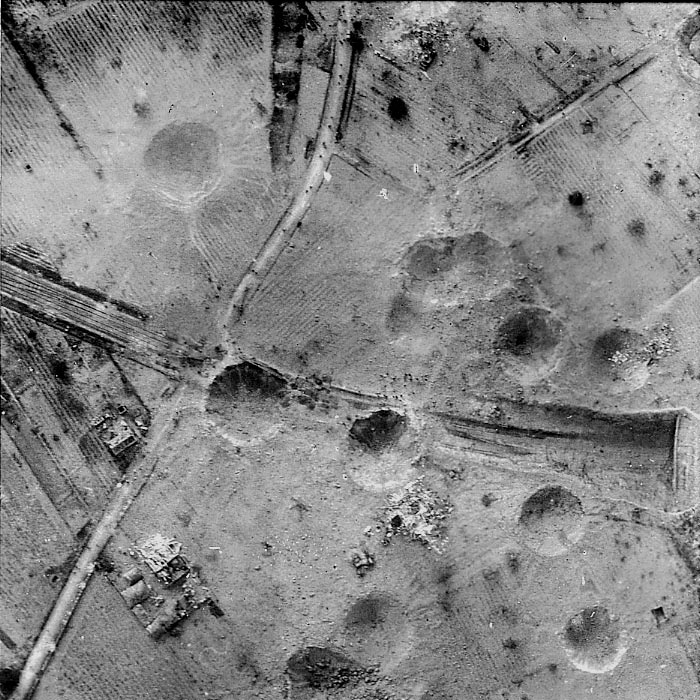 |
|
US Paratroopers in a French Village
|
 |
|
1st Duke of Wellington's Regiment
|
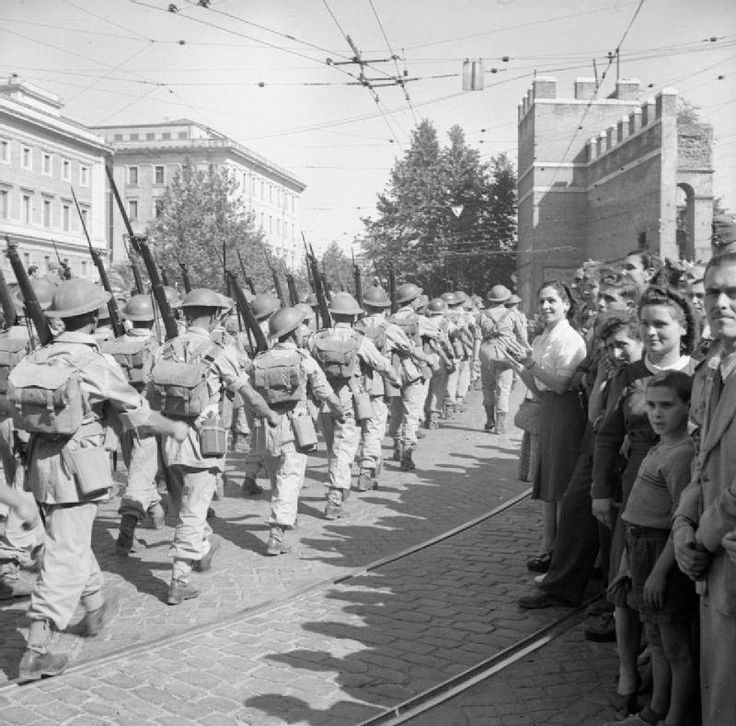 |
|
Wounded Canadian Soldiers Being Evacuated
|
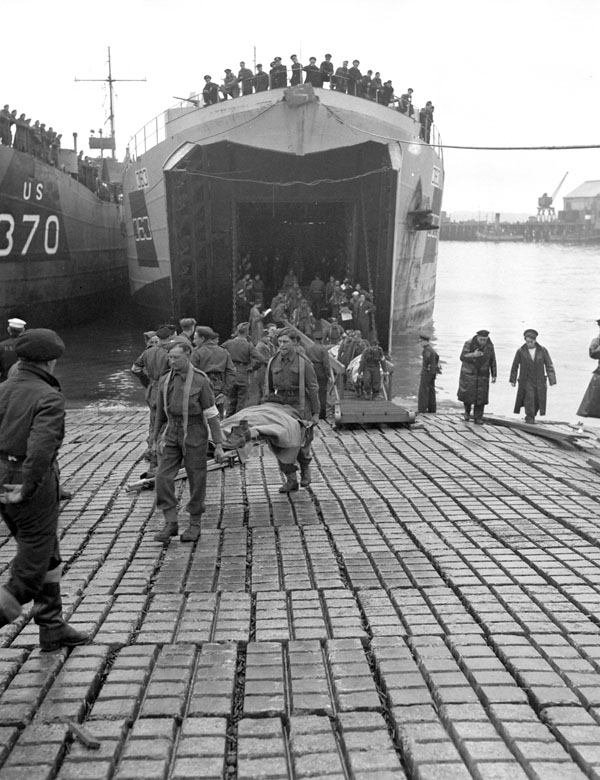 |
|
Montgomery Passes German POWs
|
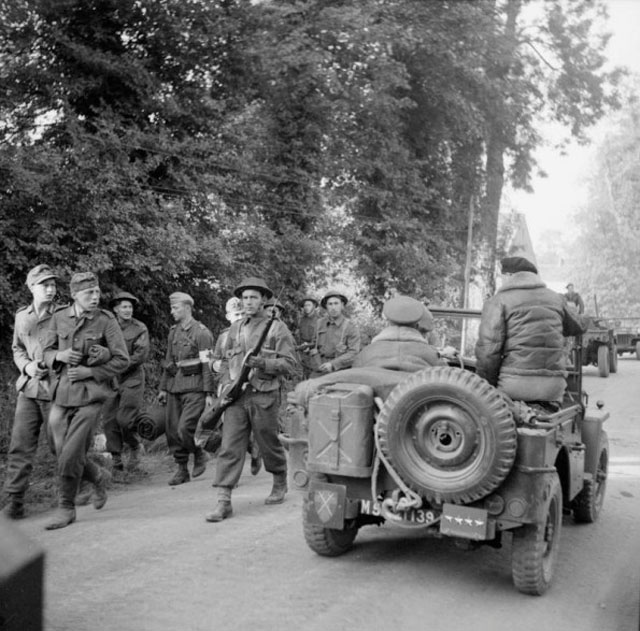 |
|
Jeeps Landing at Omaha Beach
|
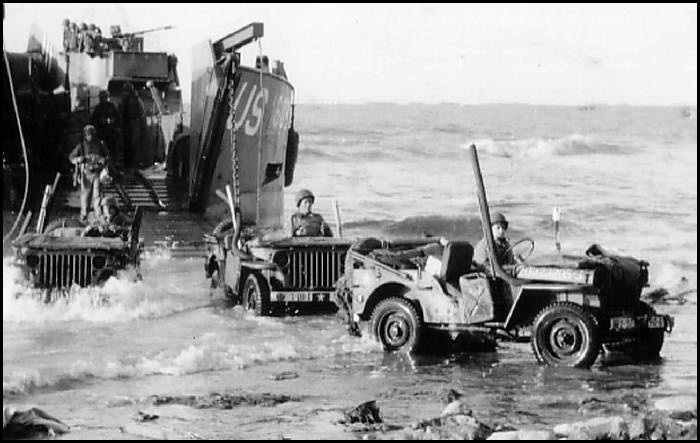 |
|
Rangers on Pointe du Hoc
|
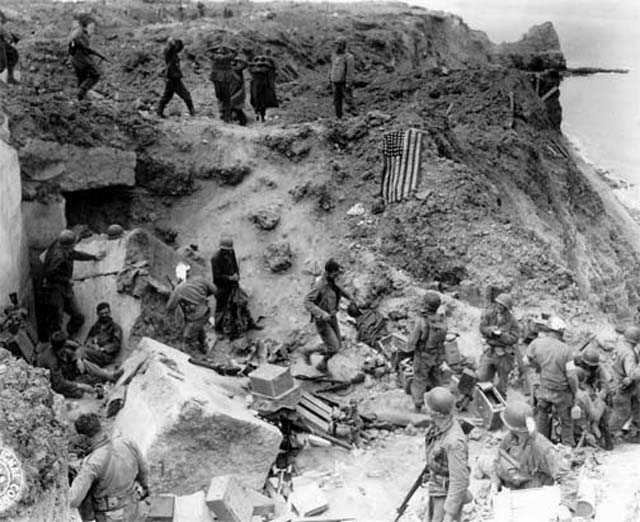 |
|
Holding a Captured Nazi Flag
|
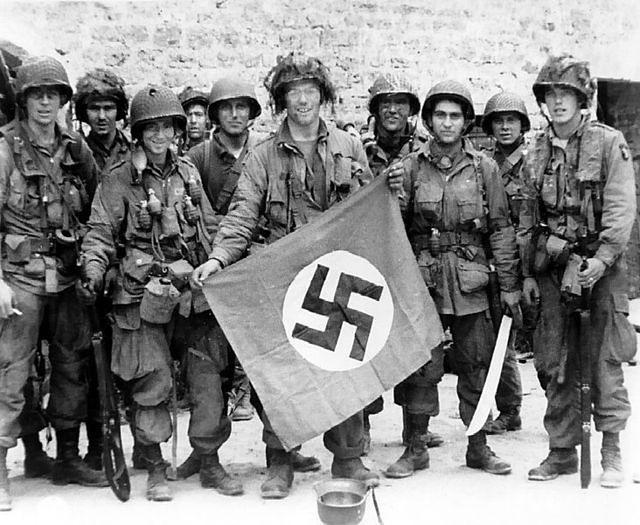 |
|
Utah Beach, June 8, 1944
|
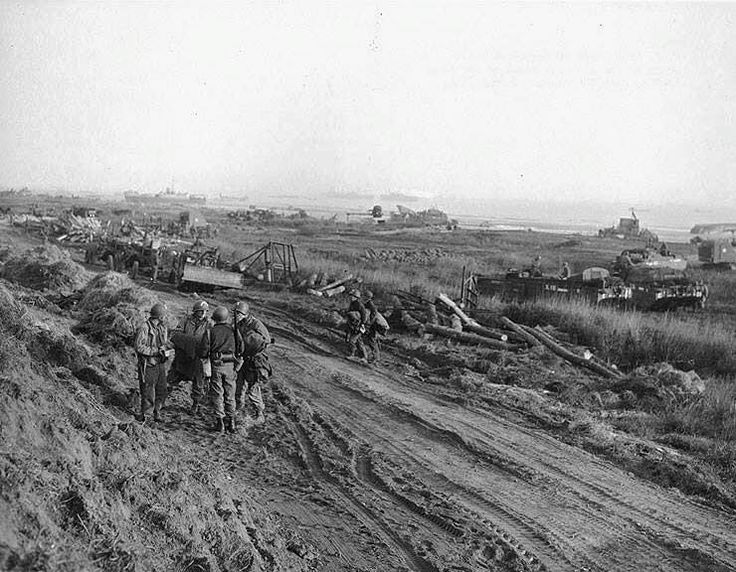 |
|
German POWs Sharing a Meal
|
 |
|
Advancing from Sword Beach
|
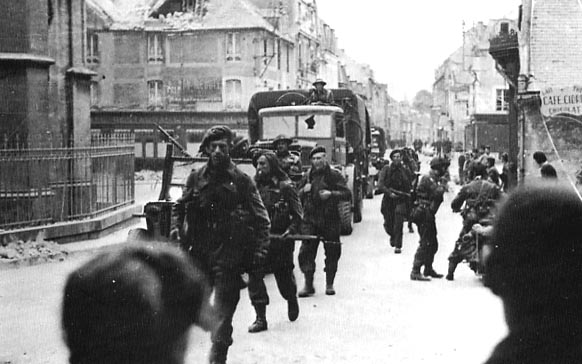 |
|
Looking Down from a Church
|
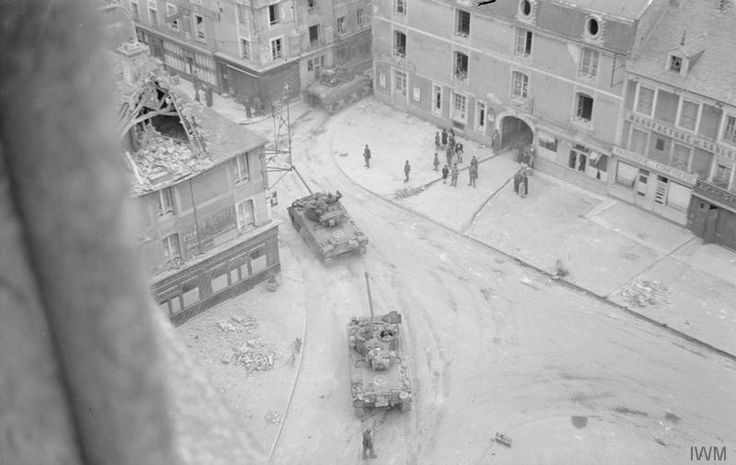 |
|
Universal Carrier Crosses Bénouville Bridge
|
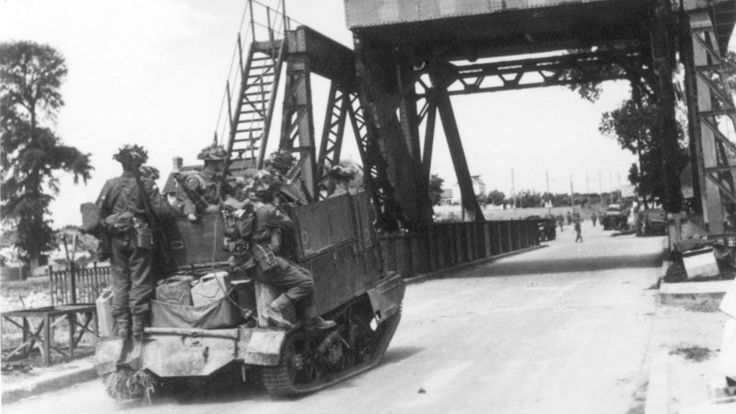 |
|
Tractor Pulling Ammo Trailers
|
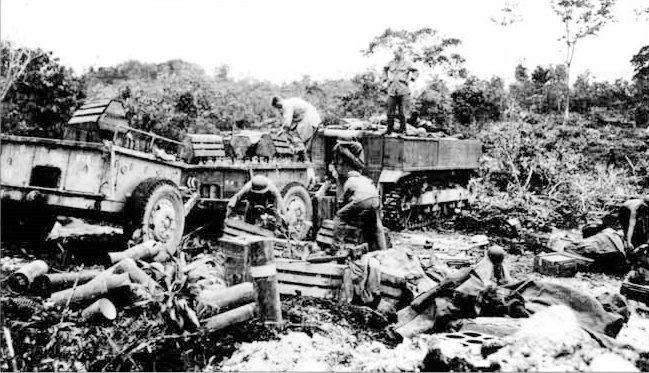 |
|
Utah Beach, June 8, 1944
|
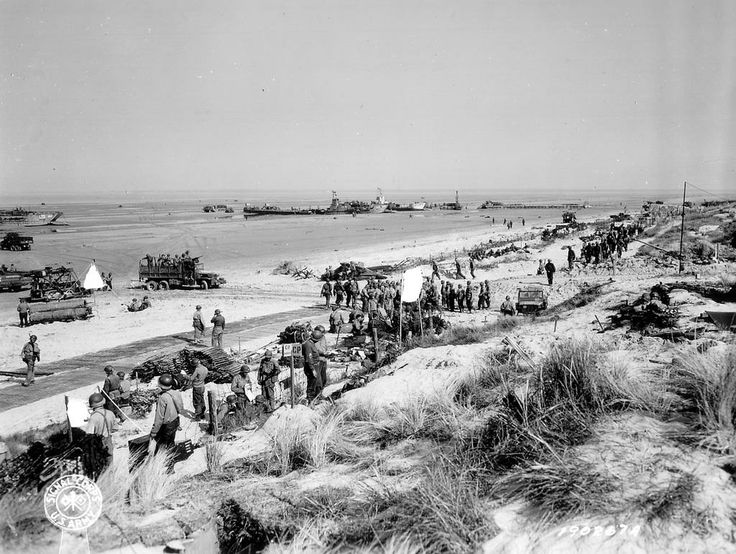 |
|
Montgomery Sets Foot on the Beach
|
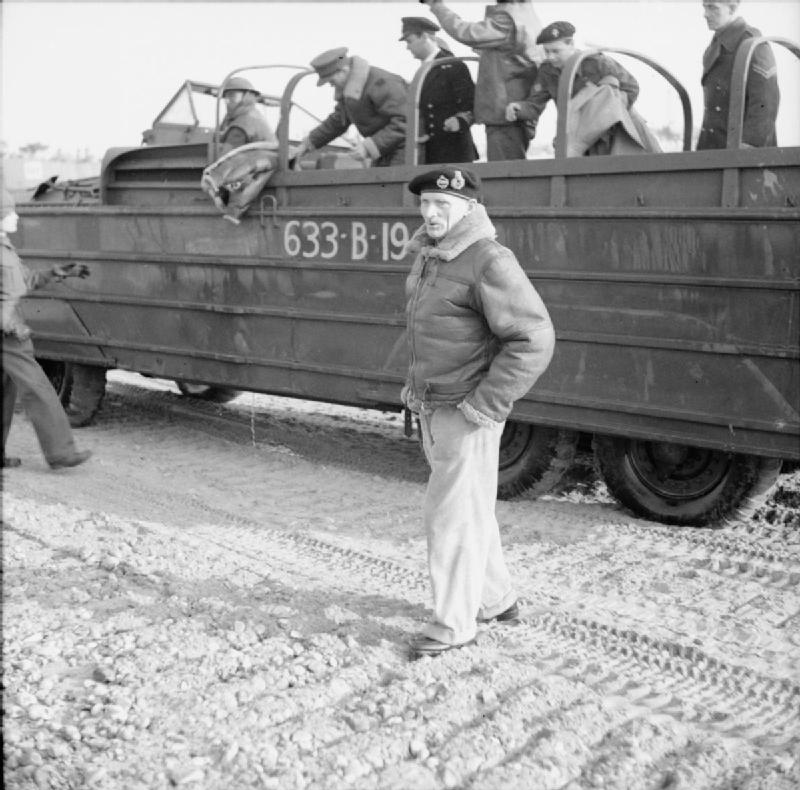 |
|
Commandos Entering Douvres-la-Delivrande
|
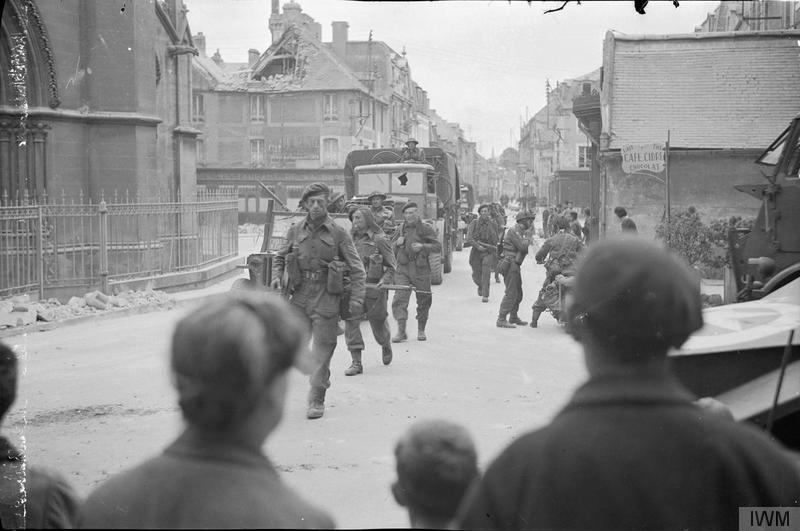 |
















